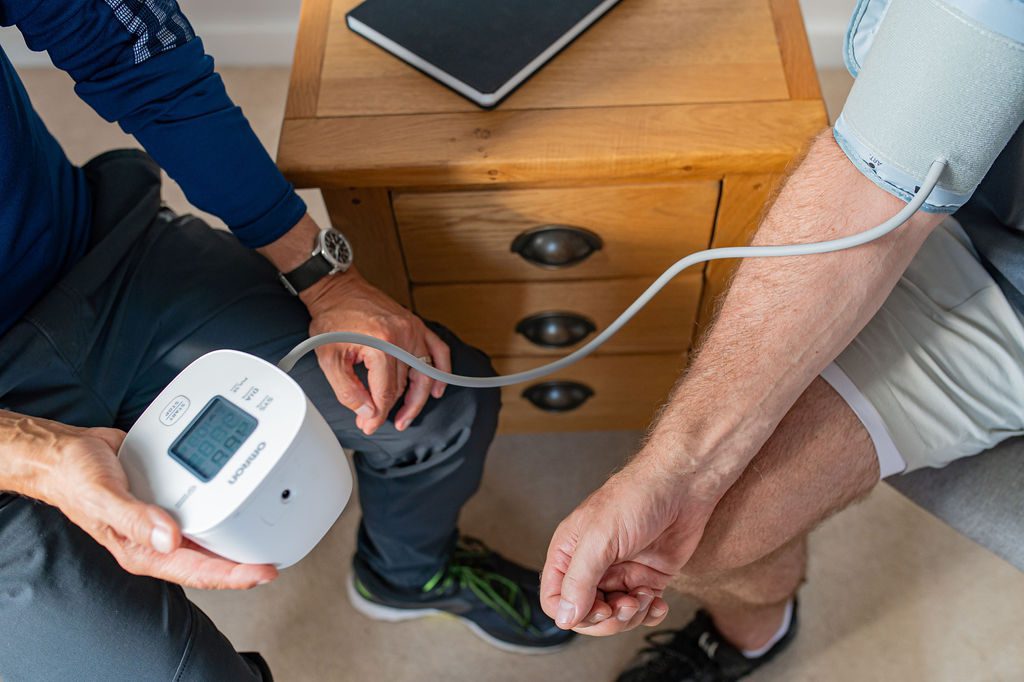Introduction
In the last blog (click here) I looked at the prevalence and development of coronary heart disease (CHD). I stated that the modifiable CHD risk factors are:
- Being physically inactive
- Being overweight
- Having high blood pressure
- Having high blood cholesterol
- Having diabetes
- Smoking
- Drinking alcohol
- Being stressed
In this article I highlight some of the very strong evidence that, by engaging in regular exercise, we can tackle the first of those risk factors; being physically inactive.

Exercise affects CHD risk
As a student of sports science I had assumed that everything I studied would be about sports performance, but in my 3rd year and masters degree I took modules where we examined how exercise can improve health outcomes. On landing a job as a university lecturer I wrote my own course on The Physiology of Exercise for Health, which I enjoyed immensely and was well received by the students. Most of the course focused on cardiovascular disease and coronary heart disease, starting with an overview of the epidemiological evidence of the role that physical activity has to play in moderating risk. Those studies from the 20th century have stood the test of time and are still relevant today. Here’s a summary.
How physically active jobs protect against heart disease
From the 1950s a link between low levels of physical activity and higher cardiovascular mortality rates has been known.
The classic study of 3,600 longshoremen (dock workers) in California published by Paffenburger in the early 1970s provides clear evidence of how differing levels of occupational physical activity level affect their risk of dying of a heart attack.
Researchers grouped workers into low, medium, and high physical activity job roles and then tracked them across 22 years; measuring how many of them suffered fatal heart attacks. Results showed that workers in high activity roles suffered significantly less fatal heart attacks by age 77 than their peers in low or medium activity roles:
Low physical activity roles = 275 heart attack deaths
Medium physical activity roles =71
High physical activity roles = 49
The large difference in cardiovascular risk between low and medium activity groups shows that the biggest benefits are conferred to those who go from low/no to medium activity levels.
Furthermore, the lack of hard physical work also carried the same cardiovascular risk as smoking and high blood pressure.

All exercise levels reduce CHD risk
Zooming forwards to recent research, a team of scientists at Oxford University have shown that any amount of exercise (compared to not exercising at all) can reduce the risk of developing coronary heart disease and that longer, more frequent exercise led to greater risk reductions.
The research findings, published in 2021, highlighted how the scientists measured the exercise levels of 90,000 people and then followed them for an average of 5 years to see if they suffered any incidence of cardiovascular disease. The results showed that there was a clear association between the total amount of exercise and a reduced incidence of cardiovascular disease.
This was also true for people with both moderate and vigorous levels of exercise. Participants in the top 25% for moderate intensity exercise showed a reduction of 49-59% in cardiovascular disease risk. The effect was even more pronounced for those who did the most vigorous intensity exercise whose risk dropped by 54-63%. All of those people more than halved their risk of an incident of cardiovascular disease compared with those who didn’t exercise.
There was also good news for people who only undertook low levels of exercise each week – their risk was also reduced, but not to such an extent.

Summary
It’s worth stating the findings again a little more clearly:
Compared with a completely sedentary lifestyle, any amount of exercise reduces a person’s risk of an incident of cardiovascular disease. This effect is multiplied (and the risk lowered further) when the intensity of exercise is increased and the exercise happens more regularly. This is independent of other well known risk factors such as diet, hypertension, and smoking.





